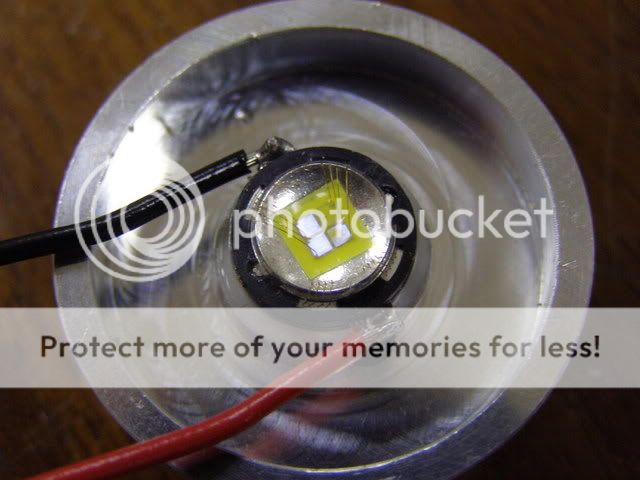Both SSC-P4 and SSC-P7 turn blue before they die from being overdriven.
Try and stay within specs. 3.5V and 2.8A.
It is better to accept a little less light than to burn out your LED (which would leave you in the dark).
Try using 3 Eneloops with a
spacer or use some other less powerful battery.
3 Eneloops should give you 4.05-4.2V and 2.8A at the start dropping to 3.45V and 2A towards the end.
I measured 2.8A with freshly charged 3*2900 mAH RayOvac C cells in my 3C M@g-P7 and also with 1*18650 in my EDC-P7.
Even when the current was below 2A in my EDC-P7, it was still more than 2X brighter than my XRE torches (Dereelight CL1H/18650 and Ultrafire C3 Q5/14500).
I had burned out an Elektrolumens My Little Friend (3xSSC-P4, 4AAA) when I switched from no-name batteries to Duracell 1000 mAH. So 4 cells is a no-no unless you use crappy cells.
Vf of J bin is 3.5V-3.75V
For a 4 battery setup it is 0.875V-0.9375V per battery.
For a 3 battery setup it is 1.166V-1.25V per battery.
Eneloops 2000 mAH are capable of producing up to 10A for a 4 battery setup.
Eneloops 2000 mAH are capable of producing up to 3A for a 3 battery setup.
Energizer 2300 mAH are capable of producing up to 3A for a 4 battery setup.
Energizer 2300 mAH are capable of producing up to 0.5A for a 3 battery setup.
Note 2300 mAH with 300 more mAH produces less amps than the 2000 mAH Eneloop. mAH rating is done at some ridicules low amp draw (like 50 mA) and is no indication of how the battery performs at high amp requirements.
Actually 4 AA Eneloops will outperform 4 D Energizer NiMH in your application.
 [/IMG]
[/IMG]





 almost lol)
almost lol)

